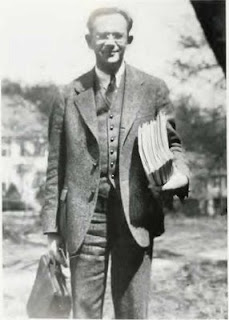Charles F. Hockett was an American linguist, anthropologist, and composer of the post-World War II era. Hockett was the last of the most influential advocates of the structural linguistics, which flourished particularly in the four decades from the 1930s to the 1960s.
Profile
- Name: Charles F. Hockett
- Birth Name: Charles Francis Hockett
- AKA: Chas
- Date of Birth: January 17, 1916
- Place of Birth: Columbus, Ohio, United States
- Date of Death: November 3, 2000
- Place of Death: Cayuga Medical Center, Ithaca, NY, United States
- Cause of Death: NA
- Interred at: NA
- Zodiac Sign: Capricorn
- Nationality: American
- Ethnicity: White
- Religion: NA
- Father: Homer Carey Hockett (1875-1960)
- Mother: Amy Francisco (1875-1949)
- Spouse: Shirley Orlinoff (b. 1920 d. 2013 m. 1942 to until his death)
- Children:
- Daughter- Alpha Hockett Walker
- Daughter- Amy Robin Rose
- Daughter- Rachel Hockett Youngman
- Daughter- Carey Beth Hockett
- Son - Asher Orlinoff Hockett
- Grandchildren:
- Carly Walker
- Luke Walker
- Hannah Walker Edelman
- Charles Kee
- Annie Kee
- Great-grandchildren:
- Chasden
- Sonja
- Elle
- Ivan
- Dage
- Alma Mater: Ohio State University, Yale University
- Charles F. Hockett is known for: his contributions to structural linguistics and linguistic anthropology
- Charles F. Hockett is criticized for: NA
- Charles F. Hockett was influenced by: Leonard Bloomfield
- Charles F. Hockett influenced: NA
Quotes
“The grammar of a language is a finite system that characterizes an infinite set of (well-formed) sentences. More specifically, the grammar of a language is a well-defined system by definition not more powerful than a universal Turing machine (and, in fact, surely a great deal weaker).” ― Charles F. Hockett, The State of the Art (1968) p. 40Major Works
- Progressive Exercises in Chinese Pronunciation (1951)
- A Manual of Phonology (1955)
- A Course in Modern Linguistics (1958)
- The State of the Art (1968)
- Man's Place in Nature (1973)
- The view from language (1977)
- Refurbishing Our Foundations: Elementary Linguistics from an Advanced Point of View (1987)
Did You Know?
- Charles F. Hockett was the fourth child of Homer Carey Hockett and Amy Francisco Hockett.
- His father was a lecturer in American History at Ohio State University.
- Hockett was known as “Chas” amongst his friends, students, and colleagues.
- In April 1942, Hockett married Shirley Orlinoff, an American professor of mathematics and writer.
- Prior to changing her name, Shirley was known as Sonja Orlinoff.
- He enrolled at the Ohio State University in 1932 at the age of 16, wherein he received his B.A. and M.A. in Ancient History jointly in 1936.
- He received Ph.D. in Anthropology at Yale in 1939.
- At Yale, Hockett studied with several other influential linguists of the time, such as Edward Sapir, George P. Murdock, and Benjamin Whorf.
- In 1946, Hockett started his teaching career as an assistant professor of linguistics in the Division of Modern Languages at Cornell University.
- In 1957, Hockett became a member of Cornell University’s anthropology department and continued to teach anthropology and linguistics until he retired to emeritus status in 1982.
- In 1986, he took up an adjunct post at Rice University in Houston, Texas, where he remained active until his death in 2000.
- He was a member of the American Academy of Arts and Sciences and the National Academy of Science, the Society of Fellows at Harvard University.
- Hockett served as the president of both the Linguistic Society of America and the Linguistic Association of Canada and the United States.
- Hockett’s works were chiefly inspired by Leonard Bloomfield.
- Hockett is most famous for defining the design features of language, which demonstrate his beliefs about the commonalities between human languages.
- Apartment from his devotion to linguistics and anthropology, Hockett also practiced musical performance and composition.
- He and his wife, Shirley, were early members of the Ithaca Concert Band, which closed every concert with “Stars and Stripes Forever,” featuring Hockett on the piccolo.
- Every member in his family played an instrument and two of his children became professional musicians.
- During later period of his life he spent much time criticizing Chomskyan linguistics, which he called ''a theory spawned by a generation of vipers.''














